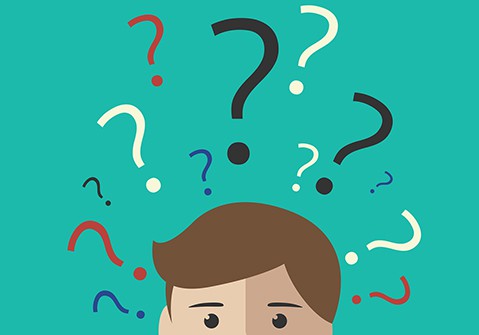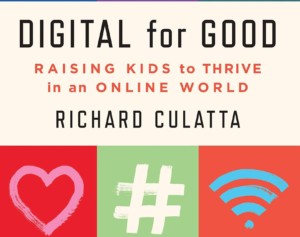Harnessing Uncertainty as a Learning Tool

It was September in Washington D.C., on a weeknight, just after midnight, and I had a one way ticket to Boston. 21 years young, I had just traded in my marketing job in Seattle for a year serving as an AmeriCorps VISTA volunteer with YouthBuild USA. And, I was without a place to live when the Greyhound pulled up to the curb.
When it comes to how we learn, rarely is something more impactful than navigating uncertainty.
Deeper Learning happens when people must simultaneously learn, apply thinking, and reflect. In these situations, it’s the individual’s unfamiliarity (with the environment, stakeholders, cultures) that is core to the learning experience.
The only stop on the bus ride was at a service station, in Connecticut I think, during the morning, but the sun wasn’t up yet. I walked around the parking lot pushing around the reality of having to find a place to live, living out of my backpack until then, navigating a city I’ve never been to, and beginning a national service term that I knew would pay me below the poverty line. I wanted to test the value of my traditional K-12 and postsecondary pathway. I wanted to step off my “direct path” to service something larger than myself, figure out my passion, and tweet it.
In a report, that was shared at the 13th European Conference on Knowledge Management, Johansen, Ekambaram, and Hald recognized that:
Managing / dealing with uncertainty requires, among other things, the following aspects that are connected to learning and knowledge sharing: Reflecting and making sense of the situation individually and / or collectively; Utilizing existing knowledge or exploring new knowledge to manage uncertainty; Gaining new knowledge and competence by managing uncertainty effectively.
As we prepare students for careers (where most don’t even exist yet because they haven’t been created by the students that will occupy them), we must engage students in learning experiences where they are faced with navigating uncertainty, where it’s also okay to fail and learn, and be exposed to risk, where you really have to “make it work.”
Uncertainty and HigherEd
At a recent Seattle Arts Lecture series, Frank Bruni talked about his new book Where You Go, Is Not Who You Will Be. Bruni described how college is a unique opportunity for a clean slate, to have access to opportunities, to explore new thinking, create relationships, and to learn from people who you don’t agree with. “Widening a base of experiences is so important,” he emphasized. “If you grew up in the city, go to college in a rural setting, if you grew up in the country, go to college in an urban setting.”
This is great advice for GenDIY students who are considering HigherEd options.
He shared his ideal college orientation: Have all freshmen unfollow half of the people they agree with on social media, and follow or like with the same number of people, organizations, or companies that they don’t agree with.
“We use social media, and as a way to cocoon ourselves in entrenched paradigms, grooves. This is creating and growing how partisan we’ve become as a nation, which is hindering our ability to work together to solve problems,” he said.
Developing an Innovation Mindset
My interest in uncertainty began in communication theory, with uncertainty management reduction. While wrapping undergrad at The Edward R. Murrow College of Communication (Go Cougs) I interviewed real estate companies in the Spokane – Coeur D’alene corridor on how the industry managed making decisions about water with the lack of collaborative water policy between Washington and Idaho, Spokane and Coeur D’alene, Spokane County and Kootenai County, and how they are adapting, or not to climate change. From this grew a much wider application and recognition of situations that involve uncertainty.
For students, learning experiences that are focused on recognizing and navigating uncertainty, are adaptive learning environments.
Tom has pointed out that traveling, experiencing new environments, and visiting other cultures can support in developing an innovation mindset. “Gain the full sense of what they’ve done and how they do it,” and be, “reflective about how you think – the first step to developing an innovation mindset.”
“Figure out what you’re passionate about and get to work reading, writing, visiting, and thinking about it with some smart people,” he said.
Looking back on that 10 hour GreyHound ride, I think what’s as important as me figuring it out what the hell I was going to do, was the decision to actually get on that bus. It was the decision to engage in the unknown. As students look for ways to take control of their journey to college, career, and contribution, educators must emphasize the importance of treading the uncharted, inside and outside the classroom.
How to Integrate Ambiguity in Learning
One way teachers can implement uncertainty is to build a lesson plan that involves problem solving as part of a virtual field trip. Go outside the designated learning area. A low-tech solution I love is “Life” Snapchat Stories. Different cities are profiled in short videos (each 10 seconds max) shot by local young people sharing what they love about their community and their lives. Here’s screenshots of a story profiling Belo Horizonte in Brazil:

Other high quality virtual field trips include Moon in Google Earth, Planet in Action, and Smithsonian Museum.
For more blogs by Tyler check out:






0 Comments
Leave a Comment
Your email address will not be published. All fields are required.